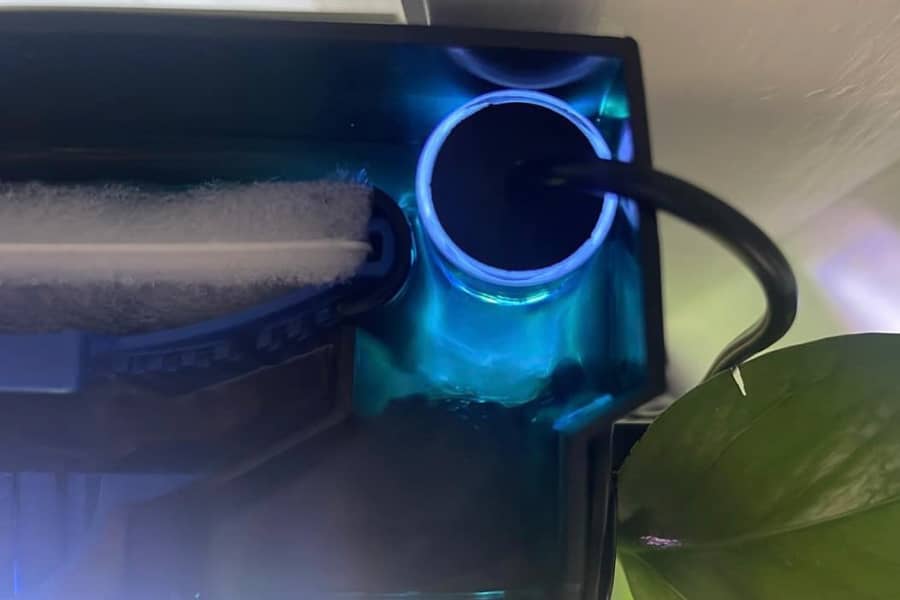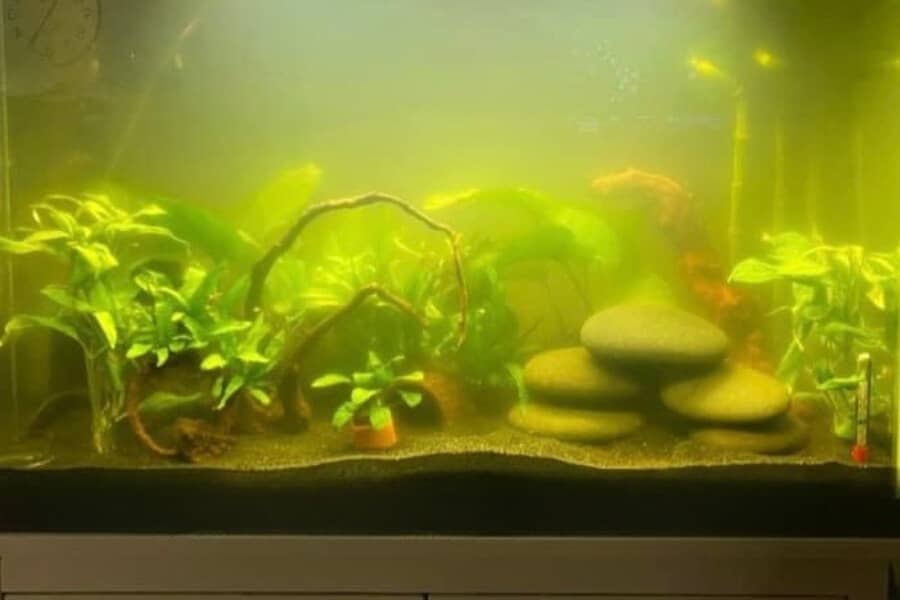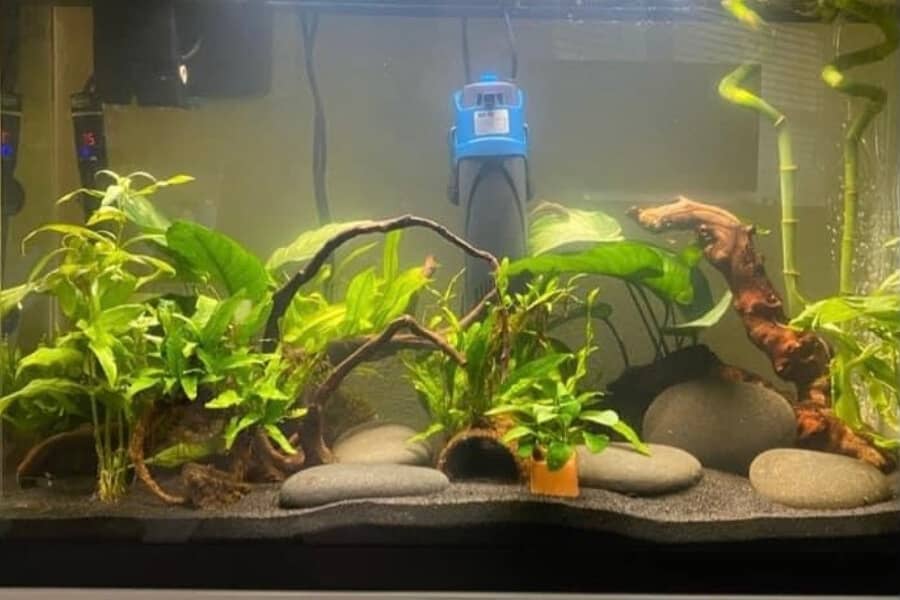Are UV Filters Good for Aquariums? Here’s What I Think
This post may contain affiliate links.
UV filters, commonly known as UV sterilizers, are one of the most widely used equipments for freshwater and saltwater aquariums. If this is the first time you have come across these little tube-like devices and you are wondering if it’s really worth the investment, then, you are at the right place.
UV filters use ultraviolet light to kill harmful microbes such as algae, bacteria, and parasites. The job of a UV sterilizer is to prevent pathogens from outbreaking diseases in an aquarium, and keep water from getting cloudy or greenish. So yes, UV filters are overall beneficial for your fish’s health and wellbeing.
You might be fortunate enough that you never had to deal with the cloudy water. But have you ever thought about the microorganisms that aren’t visible to the naked eye? How do you know if you need a UV sterilizer for your fish tank? To satisfactorily tackle these questions, we have written this article. The following sections cover pretty much everything you should know about UV filters, their efficiency, and some of the powerful applications to utilize UV sterilization in an aquarium.
An Overview: UV Sterilizers and Aquariums

Designed to be simplest, UV filters or sterilizers come with a powerhead, high-output UV bulb, ballast, and power supply. Usually, it has a tube-like design with an in-and-out flow.
A UV sterilizer’s only job is to sterilize aquarium water using ultraviolet light and make it free from algae and disease pathogens. When bacteria or other free-floating microorganisms come into direct contact with UV rays, it damages their cell’s DNA, thus preventing them from reproducing. This is how a UV filter reduces and kills the harmful bacteria from spreading in a fish tank.
UV sterilizers allow you to disinfect the water without putting any chemicals into your aquarium. However, keep in mind, UV light is not suitable for your eyes, so don’t stare at it. This is the reason a UV bulb comes safely concealed inside the UV body to prevent you and your aquatic pets from getting exposed to light radiations.
Do You Need a UV Filter for Your Aquarium?
If you are not able to determine whether or not your fish tank requires a UV filter, try to answer the following question for yourself.
Do you have to deal with cloudy or greenish water in your fish tank? If yes, this is a sign from your aquarium that you have to get a UV sterilizer to eliminate the free-floating algae causing all the nuisance. Regular water changes might help remove the algae in certain cases, but it is highly likely to come back.
If there have been any disease outbreaks in your aquarium in recent times, then it should also be taken as a cue to sterilize the tank using a UV filter.
Always remember, even if the water seems visually clear, it doesn’t necessarily mean it’s free from bacteria and other harmful microscopic life.
Having said that, buying a UV filter for your fish tank in advance can save aquatic pets from any future inconvenience. Or if you don’t want to make an investment without any apparent reason, that’s up to you. We advise you to use your discretion here.
How Efficient is a UV Sterilizer?
As we know, for bacteria and parasites to be killed, they must be exposed to UV light. The longer the organism is in contact with the ultraviolet rays, the more damage it will sustain and have a high chance of getting eliminated. Therefore, it is crucial to ensure a proper flow rate to the inline powerhead or filter pushing water through the UV bulb.


You don’t want your filter to pump out water too fast because it will decrease the amount of time the pathogens spend with UV rays. To get the most out of your UV filters, you have to keep the water flow rate at a slower speed – and that is the key to effective sterilization right there.
There have been a number of studies to determine the extent to which UV filters are capable of sterilizing aquarium water. They say these tube-like devices with a UV bulb are primarily helpful for reducing the population of the free-flowing bacteria, but there is no complete elimination of disease organisms.
It’s true that some parasites are harder to kill than others and require prolonged UV exposure. If you just set your UV filter at a reasonable flow rate – the slower, the better, you can achieve significantly better results. If a UV sterilizer prevents your tank from disease outbreaks and keeps it from getting cloudy, that means it is doing the job intended. Isn’t it all that is required or expected from these small pieces of equipment?
Best Ways to Use UV Sterilization in an Aquarium
Mainly, there are 3 options you can go about utilizing UV sterilization for your fish tank.
- As we know, a UV sterilizer is a tube-like device with an in-and-out flow. It can be connected with a powerhead, pump, or external filter to the hose tails to pump water through it. Connecting your UV sterilizer with the outflow of your external power filter will be more efficient for your tank
- Another option would be to buy hang-on or internal filters with built-in UV. If you are looking for a filtration system for your aquarium, it would be best to purchase one that has UV filtration available. This way, you don’t have to buy a standalone device for UV sterilization.
- This one is a little different from the other two. If you use a container for storing water that goes into your fish tank, in that case, you can choose to put the UV sterilizer directly in it. So, the water that is going into your main aquarium is already sterilized.
It’s suggested to go for the option which is more convenient for you and, most importantly, suits your tank requirements. Keep in mind, UV sterilizers are an addition to your filtration system and not a replacement.
Conclusion
Well, it’s time to wrap up the article. We hope the information presented here helped you gain a better understanding of aquarium UV filters. If you made it to this point, you should know how undoubtedly useful these devices are for your fish tanks and how you can get the most out of them.
Related Articles:
